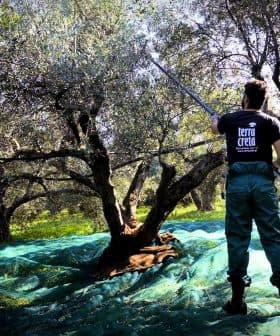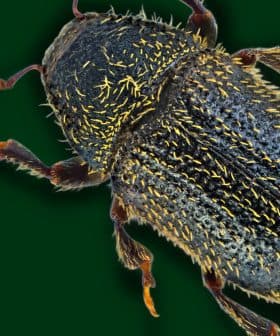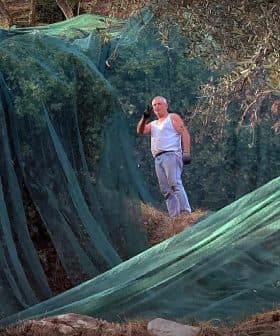Thousands of Olive Trees Destroyed by Wildfires in Tuscany
High temperatures, windy weather and dry soil served as a catalyst for the estimated 279 wildfires burning across the central Italian region.
 5.5K reads
5.5K readsWildfires are devastating olive groves, vineyards, forests, and farmland across Tuscany, leading to evacuations and significant economic losses for farmers in the region. The fires are being fueled by high temperatures, winds, and a prolonged drought, with the community facing long-term environmental and economic damage as a result.
Wildfires are burning hundreds of hectares of olive groves, vineyards, forests and farmland across the central Italian region of Tuscany as the country’s scorching summer drags on.
In the south of the region, 2,400 residents of a village on the slopes of Mount Amiata were evacuated as local authorities struggled to contain the flames.
Local growers are now seeing ash in place of those orchards where they used to play when they were kids. It is about time to work on prevention.
Farther north, in Chianti, renowned for its wine production and olive growing, flames enveloped an abandoned olive grove. From there, the wildfire quickly moved to a forested area close to a residential one.
Regional authorities said winds, high temperatures and soil dried out by the prolonged drought resulted in the blazes in one of Italy’s most important agricultural regions.
See Also:2022 Wildfire Season Expected to Be Europe’s WorstIn Lucca, west of Florence and not far from the coast, a large wildfire has destroyed hundreds of ancient olive trees dotting some of the picturesque hills of the Massarosa area.
Local farmhouses had to stop operations for at least a few weeks, causing a severe setback as July and August are the peak months for such agritourism.
Meanwhile, another wildfire has affected the area around Siena, in central Tuscany. As a result, residents of the region have become accustomed to seeing aircraft and helicopters flying to and fro as they support the containment operations carried out by firefighters and volunteers.
The farmers association Coldiretti has estimated that 279 wildfires have burned across Tuscany in June, a 136-percent increase compared to June 2021.
According to the association, blazes have devastated 549 hectares in Tuscany in the first six months of the current year. The area has also experienced a 77-percent drop in rainfall in the same period.
“We went to Massarosa and found a dire situation, with hundreds of hectares involved and relevant damages caused to olive groves,” Andrea Elmi, president of the Lucca branch of Coldiretti, told Olive Oil Times.
“After such a devastating wildfire, those trees, those orchards do not exist anymore, as the fire has burned them from the roots,” he added. “We have seen the sometimes still intact canopies collapsed right by the black smoking trunks.”
Elmi noted how the damage caused by the blazes weighs heavily on the farmers that own the groves and the rest of the affected areas. In many cases, the wildfires have damaged small groves used by locals for non-commercial self-consumption.
“Not only are the wildfires fueled by abandoned land where the lack of management makes it easier for the flames to spread, but as such blazes zero in on those small orchards, many landowners just give up and add their burned-down groves to the long list of abandoned land,” Elmi said.
Coldiretti estimates that at least 60 percent of the wildfires are caused by carelessness and arson.
See Also:Tuscan Producers Triumph at NYIOOC, Overcoming Late Frosts and Summer HeatAccording to the association, every hectare burned by the flames is costing the community €10,000 on average, expenses that cover the firefighting operations, remediating the damaged land and accounting for the economic damage.
“To remediate a burned-down forest, we will need at least 15 years, with damage to environment, income, jobs and tourism,” Coldiretti said of the damage to the heavily forested region.
“Such devastating incidents leave the locals with a sense of anger and loss,” Elmi added. “For activities such as farmhouses, the forced closures and cancellations represent an immediate depletion.”
“Local growers are now seeing ash in place of those orchards where they used to play when they were kids,” he said. “It is about time to work on prevention.”
Elmi emphasized how combating the abandonment of olive groves and farmlands should be considered the first step.
“We could work on that by making it easier for farmers to set up and launch new agricultural activities,” he said. “Farmers need to see a path to earn an income, and nowadays, that path is harder and harder to see.”
“Production costs are skyrocketing, the effects of the Covid-19 pandemic still loom over the sector while the war in Ukraine makes everything more difficult,” Elmi added. “Farming today is for heroes.”
Elmi also remarked on the significance of the proposal that Coldiretti and other groups are supporting, the so-called “small basins project.”
The project aims to build a network of thousands of small reservoirs to collect rainfall throughout the year that may be used by farmers for irrigation and by firefighters.
“In the current period, with the war and the related uncertainties, a national effort is ongoing to identify new and wider areas to grow staple crops,” Elmi said. “This cannot happen in the Po Valley, as we have already reached the maximum possible expansion there, but it should happen on the slopes of the Apennines, a more challenging environment.”
“There, those small basins would contribute to bringing those lands back to production while also combating the land abandonment phenomenon and supporting the firefighting operations,” he concluded.
Share this article









